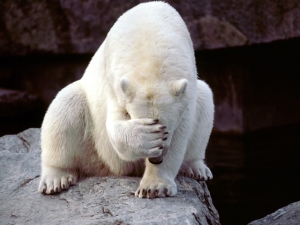Wednesday, PRSA unveiled three candidate definitions for their #PRDefined campaign, one of which will form the basis of a new, modern definition of public relations. PR professionals and the general public are invited to weigh in on the options to help PRSA in choosing – or creating – this new, modern definition of public relations. The “comments period” lasts through January 23 – you can through your thoughts in here. Without further ado – the contenders (plus added commentary):
Definition No. 1:
“Public relations is the management function of researching, engaging, communicating, and collaborating with stakeholders in an ethical manner to build mutually beneficial relationships and achieve results.”
I have a strong negative reaction to the word “stakeholder.” This word is not representative of all PR professionals in what should be a current definition of PR – not a limited description that defines few situations in the field. As well, it is unnecessary to include a laundry list of functions in this redefinition of our profession. And, if we need to state “in an ethical manner” in our definition we have a larger problem with our profession than the need to redefine it.
Definition No. 2:
“Public relations is a strategic communication process that develops and maintains mutually beneficial relationships between organizations and their key publics.”
Definition No. 3:
“Public relations is the engagement between organizations and individuals to achieve mutual understanding and realize strategic goals.”
I’m disappointed. It seems a committee selected words from the past century of PR definitions and crammed them into 3 new definitions. This is not at all how I imagined this process. This is much ado about nothing. These are not modern or new in any way, but simply a regurgitation of former definitions.
Let’s take a closer look:
In the early 1900′s Edward Bernays (some say the founder of public relations) originally defined PR as:
“A management function which evaluates public attitudes, identifies the policies and procedures of an individual or an organisation with the public interest, and plans and executes a program of action to earn public understanding and acceptance.”
Doesn’t this sound a lot like Definition No. 1? Should we want a laundry list that is in neither concise or all-inclusive PRSA can apologize for the hubbub and return to the original definition from the early 1900’s.
After several other revised definitions, the Public Relations Society of America (PRSA) again re-defined PR In 1982 as:
“Public relations helps an organization and its publics adapt mutually to each other.”
Doesn’t this definition also sound too similar to our “new, modern” definition contenders?
In the beginning, I struggled to get on board with redefining my profession, forced myself to take part in the process and am (to be blunt) embarrassed by the outcome.
I was under the impression the goal was to create a concise description defining our profession in a modern way that is easily understood by the general public. Why did PRSA not throw out the old, tired words we’ve used for more than a century and begin fresh? We need a new, modern, concise definition defining the uniqueness of the profession while allowing for the intricacies of technological advances and the wide-ranging environments serviced by PR professionals. I hoped this effort would unite those in the profession and educate those outside of it. To the contrary, we have again put ourselves in an awkward position best described by Doc Searls (@dsearls):
“PR has the biggest PR problem of all: people use it as a synonym for BS.”
This was an opportunity to change the negative opinion of our profession. This was a opporunity to start the process of regaining respect. We have failed miserably. We owe it to ourselves to be a bit more innovative with our “new, modern” definition. Back to the drawing board, PRSA.

Talk to me...